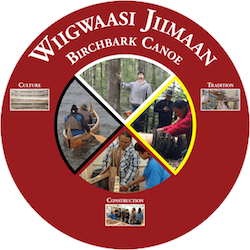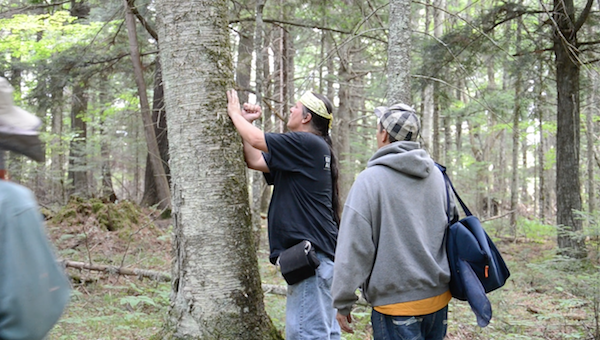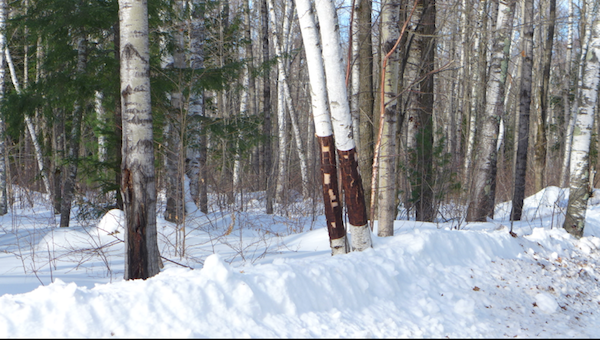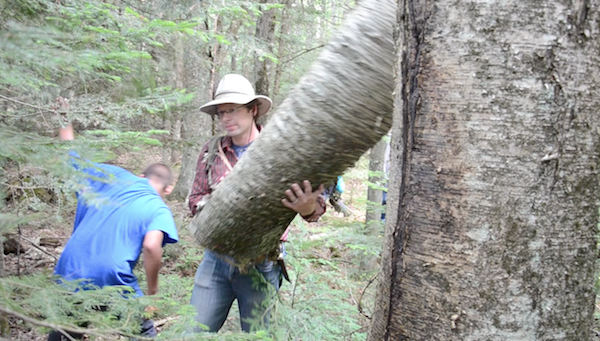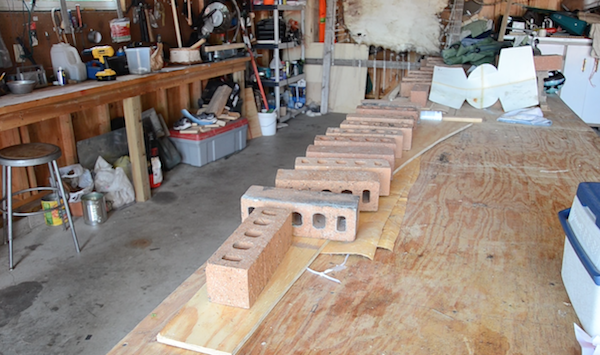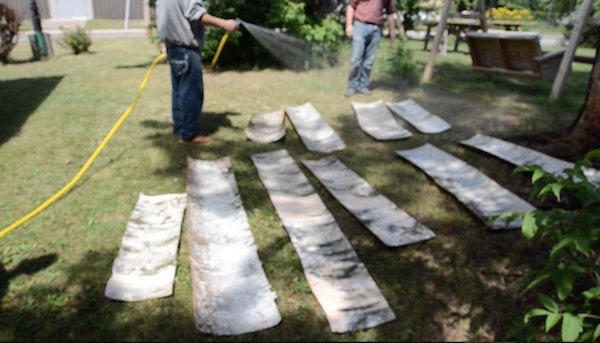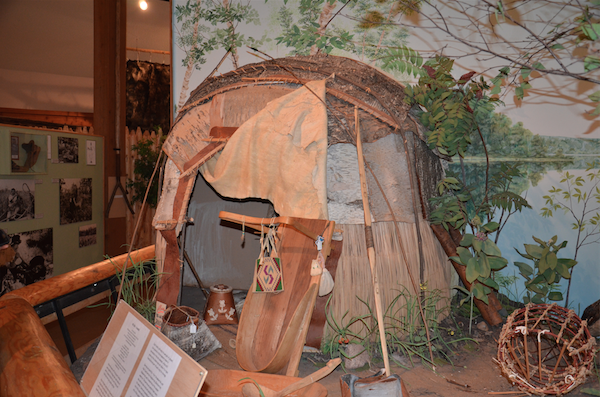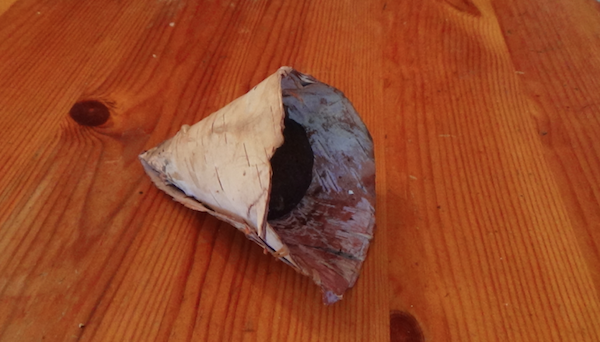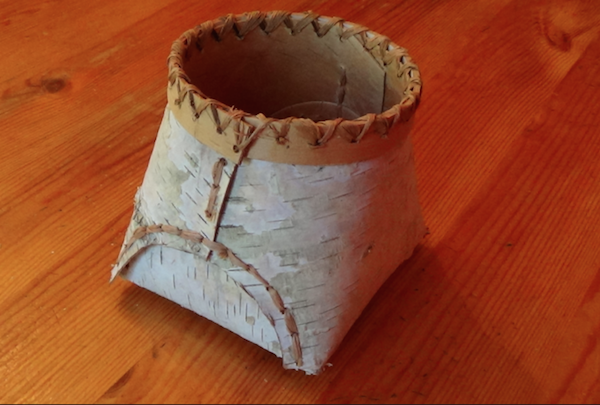|
||||
Harvesting and Processing Wiigwaas,Birch BarkThe canoe was constructed over the course of four seasons. The time to harvest bark for the canoe was the late spring and early summer. At this time of year, the bark comes off the tree most easily and in one piece.
All the different trees that Wayne harvested were first carefully checked to make sure that their characteristics matched what was needed for a canoe (TD) Watch Wayne harvest a piece of bark:
Wayne with freshly harvested bark (TD) The birch will survive but the bark area will darken over time (TD)
Birches showing dark patches where bark has been harvested in the past (TD)
Tim carrying roll of harvested bark back to the truck to store in preparation for the building (TD)
Wayne, Tim Frandy, and Tom Loeser found the birch tree that furnished the main part of the bottom of the canoe in the early summer of 2013. Watch Tom Loeser's cell phone footage of the harvesting. Often, when taking a piece of bark this size, canoe makers will first cut the tree down. But Wayne managed to accomplish the skinning without felling the tree. (Footage by Tom Loeser)
Long rolls of bark were stored in Wayne's basement before being transported to Madison. Rolls were kept moist through regular hosing (TD)
Hydrating a long piece of harvested birchbark. Long pieces like this were used for the bottom of the canoe (TD) Tying up a bundle of hydrated birch bark (TD)
Smaller pieces of bark under weights. Wayne harvested and prepared a number of such pieces to be used for side panels of canoe (TD)
Hydrating the side panel pieces. Wayne wanted to have a good supply of extra pieces in store to take down to Madison (TD) Ojibwe people have made abundant use of birch bark through the centuries. It served as one of the main materials for Ojibwe homes, wiigiwaam.
Display of Ojibwe wiigiwaam, George W. Brown, Jr. Ojibwe Museum and Cultural Center, in downtown Lac du Flambeau. Carefully preserved birchbark scrolls preserve ancient history and sacred knowledge and have survived for centuries. Birchbark containers were used to store food items and could be sewn so as to be watertight. Flat winnowing baskets could be used to process wild rice. Some containers could even be used to boil foods, since birchbark, if properly hydrated, will not burn over a fire.
Here Wayne shows how one can etch designs on bark harvested in winter--bibooni-wiigwaas ("winter bark").
(TD) Wayne uses small pieces of birchbark to create cones for storage of maple sugar in useable quantities.
(TD) This maple sugar basket made by David and Sandra Peterson of Lac du Flambeau illustrates the fine workmanship that goes into birchbark containers. Baskets like this were made to catch spring sap from maple trees. For other examples of Ojibwe basketry, see the website of the Woodland Indian Art Center, in Lac du Flambeau. |
